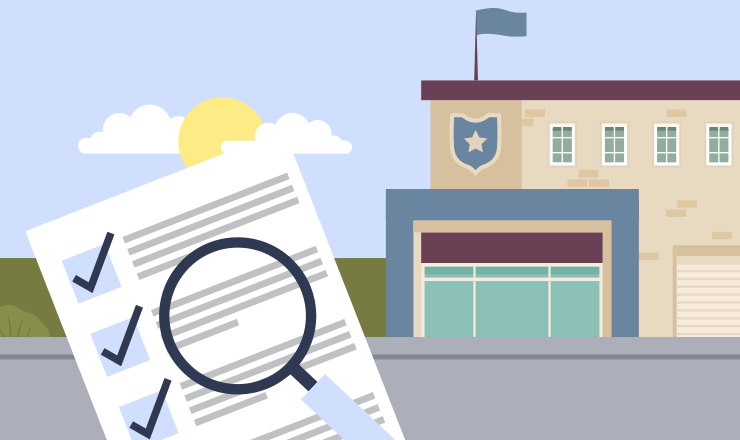How to Stay on Top of Your Police Department’s Job Sites

Take Control of Your Assets
A personalized demo is just one click away.
Your city’s police department can work on dozens of different job sites on any given day. No two days are the same, and each case comes with a boatload of paperwork.
You have agents at multiple sites, and those department job sites change daily, sometimes hourly. You need an effective way to manage those sites and keep them secure.
Depending on the size of your police force, your department could be specialized or generic. There are any number of types of job sites you could visit.
- Crime scenes
- Traffic incidents
- Canvassing neighborhoods
- Stake-outs
- Surveillance
- County Jail or Prison
Each job site carries with it different responsibilities and different levels of security. Here are some tips to help you stay on top of each category and support your officers out in the field.
Track Everything Related to Job Sites on a Single Database
Trying to track contracts, agreements, paperwork, and other related work items over separate software systems can lead to unnecessary extra work. Centralizing all of your information means you have one place to look when you need to track something down.
When you need information in a crisis, you won’t have to fumble around to find something that could save an officer’s life.
One of Asset Panda’s Clients, Wilson County Sheriff’s Office, saves hours each week by using our database to track their efforts.
Use a Cloud-based Software
Things change quickly when your police officers are out in the field. Trying to keep up with those changes using anything but a cloud-based software will leave you out of the loop. Your officers will call when they can, but sometimes things happen so quickly they can’t take the time to update you personally. Plus, your attention needs to touch on so many different things, there’s no guarantee you’ll be available when they do.
Dispatchers are a great way to keep you updated. Pairing their efforts with cloud-based software and your officer’s GPS will give you real-time data on which you can make decisions.
Connect GPS
If your officers are in pursuit or on the move, they may not be able to inform you of what is happening. GPS tracking can help give you some information as to where your field units are and where they’re headed, should something change abruptly.
GPS is also a great way to track mileage and help you stay on top of fleet maintenance needs. Once each vehicle hits a certain number of miles driven, you can set your system up to send a notification to send it in for repairs.
Make Reporting Easy
The easier it is for your officers to create reports and fill out paperwork, the more likely they are to get it done quickly. If they can do it on the go, during their down-time in the field, they’re more likely to get it done.
Cloud-based systems are set up to allow your officers to send in reports from anywhere in the world. While they may not travel far from home every day, some days they won’t make it into the office before you need data. Working from their phones or computers on the go is an excellent way for you to simplify the reporting process.
Create a Self-Updating System
Trying to update all the changes yourself is impossible. Even relying on dispatchers and administrative staff can be cumbersome and requires delays before you can get information.
With all of the automation options, self-updating systems are things of the present, not of the future. Tracking everything in a cloud-based system is a great way to automatically populate fields and give you the information you need without imposing on your officers. That way, they can focus on matters that can’t be handled by algorithms or software solutions.
Take Control of Your Assets
A personalized demo is just one click away.
Related News & Press

Learn more from an Asset Panda expert
Get a FREE consultation with an asset tracking expert to find out how you can transform your asset tracking.
Contact our Sales Team at (888) 928-6112


